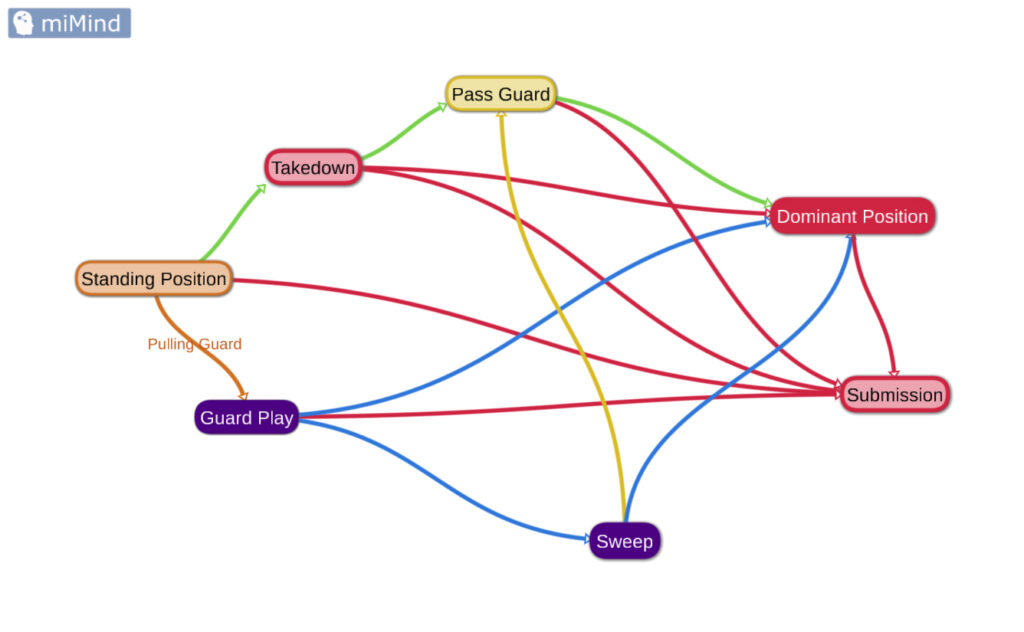One of the problems I face as an instructor is when a person is brand new to Brazilian Jiu Jitsu there is a lot of info I need to take in on day one. Teaching a person new movements, techniques, and the desired goals and outcomes they should be hunting for can be overwhelming. This article is meant to help beginners conceptually understand what they should be striving for in the game of Brazilian Jiu Jitsu. Coming to class is the best way to practice movements and learn new techniques. But all techniques are a means to a finite number of ends. A flowchart of these goals and events may help you understand where the techniques fit in and what your strategy could be at any stage of your development as a practitioner.

If you are the aggressor and are successful at every stage, this is what the flow would look like. Each of these bubbles contains its own vast landscape of techniques. For brevity, only one example will be shown for each.
Step 1 - The Takedown
You and an opponent would start in the standing position. Assuming your opponent also wants to fight you on their feet, you would want to knock them down onto their butt or their back. They will likely land with the use of their guard. Meaning that they will be able to fight you with their hands AND their legs from the downed position.
Step 2 - Passing The Guard
Your next goal would be to get around your opponents legs, otherwise known as “passing guard”. There are myriad defensive and offensive strategies for a guard player. So it’s always a priority to try to get around your opponent’s legs which will go a long way toward making them less dangerous and easier to control.
Step 3 - Securing a Dominant Position
The dominant positions are either a pin position on top, or some variation of back control (the video above shows a guard pass which transitions to back control, one of the most dominant positions in the sport of Brazilian Jiu Jitsu). Your opponent will have very few options left and most of those will be solely defensive. The aim of any of these dominant positions is to wage a war of attrition with control/pressure, capitalize on opportunities created by escape attempts or other desperate maneuvers from the disadvantaged athlete, and/or to work toward isolating a limb and to progress to the final stage…
Step 4 - Achieve a Submission
A submission is any pressure, joint lock, suffocation, or strangle that makes your opponent “tap out”. It’s the most decisive end to a Jiu Jitsu exchange which demonstrates a clear winner and a clear loser.
You might be wondering “hey! This guy totally didn’t secure a dominant position before getting the submission! What gives!?!?!”. And if you look up the match in it’s entirety, I didn’t take my opponent down either *gasp*.
The flow that I outlined and described in this post is VERY far from comprehensive. But it’s a decent place to start if you’re new. It gets a lot wilder and a lot more fun! Jiu Jitsu is a game where anything can connect to everything (or mostly everything). It’s an ever evolving infinite web of fun, sweat, and madness! A slightly more sophisticated version of the flow would look something like this…

The above would apply if everything goes according to plan for the aggressor, and if the aggressor is an athlete who prefers to play mostly top position for their offense. An even more sophisticated version of the flow would look like this…

There is a lot more to unpack in this last version and I’m absolutely looking forward to doing that in a following article (in the very near future). I hope this helped!